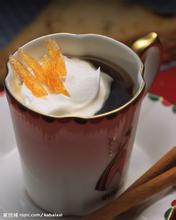Special introduction to the producing area of Jamaica Blue Mountain Coffee with balanced Acid, Glycol and Alcohol flavors.
Blue Mountain belongs to the mid-subtropical monsoon humid climate region, with sufficient light, abundant rainfall and long frost-free period, with an annual average temperature of 17.8 ℃. The complex geology and geomorphology, fertile soil and warm and humid climate endow the blue mountains with beautiful scenery and rich natural resources. Blue Mountain is located in the eastern foot of Jiuyi Mountain, the terrain is inclined from southwest to northeast, the mountains, hills, hills and flat areas are interlaced with each other, mainly mountainous areas, is a typical mountain county.
Hydrology
Scenery of Lanshan County
Scenery of Lanshan County (16)
Lanshan County, with an average annual precipitation of 1660 mm, spans the birthplace of the Yangtze River and Pearl River basins, with well-developed water systems. There are 69 rivers with a rain collection area of more than 10 square kilometers or more than 5 kilometers. The theoretical reserve of water energy is 212000 kilowatts, the average annual flow of surface water is 1.8568 billion cubic meters, and the average annual amount of groundwater is 337.7 million cubic meters. The annual average amount of water resources is 2.3592 billion cubic meters, or 6954 cubic meters per person, which is 2.29 times that of Hunan Province's annual average water volume of 3038 cubic meters and 2.67 times that of China's 2600 cubic meters. Each mu of cultivated land has 8250 cubic meters of surface water, which is 1.78 times that of 4650 cubic meters per mu in Yongzhou City. [7]
Natural resources editor
Land
By 2003, Lanshan County has an area of 239900 mu of cultivated land, including 188500 mu of paddy field, 51400 mu of dry soil and 0.7 mu of flat cultivated land.
mineral products
There are 24 kinds of proven minerals in Lanshan, such as iron, manganese, lead, zinc, uranium, copper and silica. The reserves of black soil type manganese ore are more than 150 million tons, the total value of mineral deposits ranks second in Yongzhou City, and its black soil iron-manganese ore ranks first in Hunan Province. [7]
Forest
Lanshan County is rich in forest resources, enjoying the reputation of "Huiwei green, floating blue, hundred miles of forest, enclosed and far away" and "woodcutter rich bamboo forest". The territory is rich in pine, bamboo, eucalyptus, metasequoia, ginkgo, yellow fir, spotted bamboo, dragon bamboo and other rare plants, with a forest coverage rate of 72%. By 2003, Lanshan County had 143848.5 hectares of forestry land, accounting for 79.65 percent of the total area of Lanshan County, with a forest accumulation of 4.544 million cubic meters and a forest coverage rate of 71.52 percent. It is a key forest county in Hunan Province. The eucalyptus trees in Hankou and other hilly areas of Maojun Town Huoshi Office have developed to more than 10,000 mu, which is the base of industrial raw material forest in Lanshan County.
When it comes to Jamaica, everyone's eyes lit up immediately, because it produced the best "Jamaican Blue Mountain Coffee" (Jamaica Blue Mountain) in the world. We absolutely believe that Jamaica Blue Mountain Coffee is the best coffee, its acid, sugar, alcohol and bitterness are well balanced, fragrant and smooth to drink, but its price is so high that although it is worth a try, there is no need to be fascinated by it. Because other selected coffee also has its own characteristics, and the taste is delicious, the price is also reasonable, this is the good coffee in our life.
The earliest "Jamaican Blue Mountain" refers to the coffee produced by "Warren Ford Farm" and "Silver Hill Farm", with the former of the best quality; today, the Jamaican Blue Mountain refers to coffee beans growing in the Blue Mountain area (more than 1000 meters high) east of Kingston, the capital of Jamaica. Now Mawei is the largest manor, its barrel is printed with M.B.C.F, and its products are often found in Taiwan. The quality control of the Blue Mountains in Jamaica is very strict, and the certification work is carried out by the government's "Coffee Industry Committee".
Coffee beans that generally grow at low elevations and other areas can only be called "Jamaican mountain beans" or "Jamaican waterwashed beans". Compared with the Jamaican Blue Mountains, they have a lot of flavor, but, these producing areas are twice the size of the real blue mountain areas, and the output accounts for 75% of the country's output, so when you buy Jamaican coffee, don't think you bought blue mountain coffee.
Because Jamaica Blue Mountain is so famous, there are fake Blue Mountain Coffee on the market, or simply called "Blue Mountain Coffee". It is basically a comprehensive product prepared by the store. there may not be a real Jamaican blue bean in it.
History editor
In 1717 King Louis XV of France ordered the cultivation of coffee in Jamaica for twenty years.
Blue Mountain Coffee
Blue Mountain Coffee (6)
In the mid-1970s, the Governor of Jamaica, Sir Nicholas Lloyd (Nicholas Lawes), imported Arabica seeds from Martinique and began to plant them in St. Andrew. To this day, St. Andrews is still one of the three major producers of Jamaican Blue Mountain Coffee, with the other two producing areas: Portland (Portland) and St. Thomas (St.Thomas). In eight years, Jamaica exported more than 375 tons of pure coffee. In 1932, coffee production reached its peak and more than 15000 tons of coffee was harvested.

Important Notice :
前街咖啡 FrontStreet Coffee has moved to new addredd:
FrontStreet Coffee Address: 315,Donghua East Road,GuangZhou
Tel:020 38364473
- Prev

Introduction to the characteristics of Manor Manor with rich taste and mellow taste of Indonesian Manning Coffee
The full name is the people's Congress. The national legislature exercises the general legislative power except drafting and amending the Constitution and formulating the major policies of the state. Congress does not have the power to remove the president from office, nor can the president announce the dissolution of Congress; but if the president violates the constitution or the resolution of the people's association, Congress has the power to recommend that the association pursue the president's responsibility. There are a total of 500 members, all of whom are also members of the people's Association. The term of office is five years. Of which 462
- Next

Flavor and taste characteristics of Tanzanian coffee with pure flavor introduction of fine coffee in manor producing area
Pyrethrum: mainly planted by small farmers, the planting area is distributed in the southern highlands of Mbeya District and Iringa District. The annual output is estimated at 2500 tons. The centralized management department of the industry is the Tanganyika Bureau of exterminating Chrysanthemum. Oil crops: non-traditional crops, including industrial and oil crops, such as castor, sunflower, peanut, sesame, coconut, cottonseed and soybean. Many provinces are suitable.
Related
- Detailed explanation of Jadeite planting Land in Panamanian Jadeite Manor introduction to the grading system of Jadeite competitive bidding, Red bid, Green bid and Rose Summer
- Story of Coffee planting in Brenka region of Costa Rica Stonehenge Manor anaerobic heavy honey treatment of flavor mouth
- What's on the barrel of Blue Mountain Coffee beans?
- Can American coffee also pull flowers? How to use hot American style to pull out a good-looking pattern?
- Can you make a cold extract with coffee beans? What is the right proportion for cold-extracted coffee formula?
- Indonesian PWN Gold Mandrine Coffee Origin Features Flavor How to Chong? Mandolin coffee is American.
- A brief introduction to the flavor characteristics of Brazilian yellow bourbon coffee beans
- What is the effect of different water quality on the flavor of cold-extracted coffee? What kind of water is best for brewing coffee?
- Why do you think of Rose Summer whenever you mention Panamanian coffee?
- Introduction to the characteristics of authentic blue mountain coffee bean producing areas? What is the CIB Coffee Authority in Jamaica?

